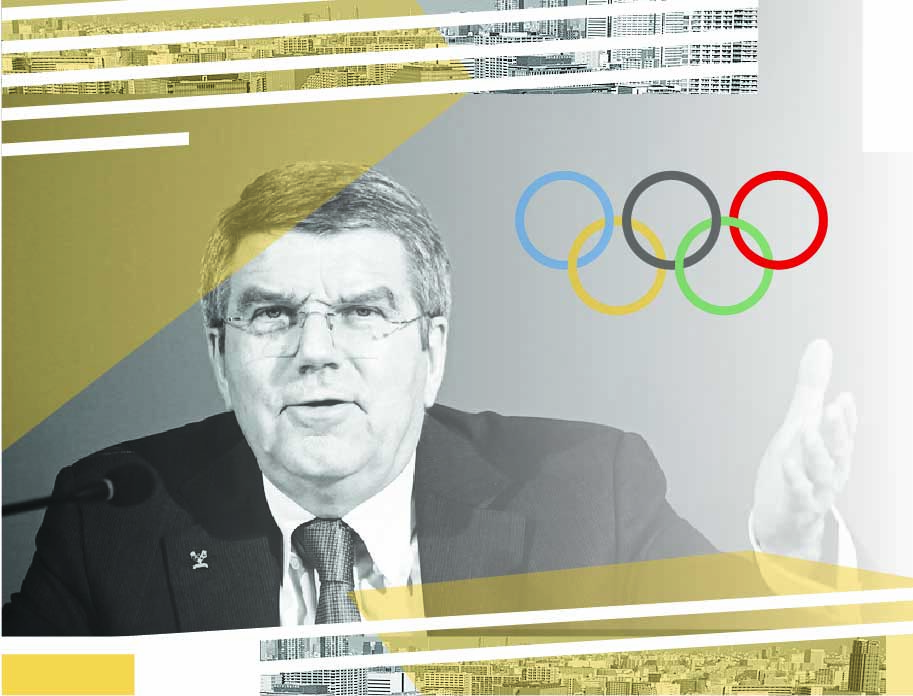
Dr Kulveen Trehan
Faculty at University School of Mass Communication, Guru Gobind Singh Indraprastha University, Govt. of NCT of Delhi, India. She has presented several papers on media coverage of women in sports, construction of female athletes in digital campaigns and published on Indian sportswomen’s official dress code.

Section 2: Media Coverage & Representation
- ”Unity in Diversity” – The varying media representations of female Olympic athletes
- The Olympic Channel: insights on its distinctive role in Tokyo 2020
- How do we truly interpret the Tokyo Olympic ratings?
- Between sexualization and de-sexualization: the representation of female athletes in Tokyo 2020
- Reshaping the Olympics media coverage through innovation
- An Olympic utopia: separating politics and sport. Primary notes after analyzing the opening ceremony media coverage of mainstream Spanish sport newspapers
- What place is this? Tokyo’s made-for-television Olympics
- The paradox of the parade of nations: A South Korean network’s coverage of the opening ceremony at the 2020 Tokyo Olympics
- Tokyo 2021: the TV Olympics
- Why we need to see the “ugly” in women’s sports
- “The gender-equal games” vs “The IOC is failing black women”: narratives of progress and failure of the 2020 Tokyo Olympics
- Ghana: Poor local organizing, and absence of football team dampens interest
- Megan Rapinoe: The scary Bear for many Americans?
- ‘A Games like no other’: The demise of FTA live Olympic sport?
- Temporality of emotionalizing athletes
- Fandom and digital media during the Tokyo 2020 Olympic Games: A Brazilian perspective using @TimeBrasil Twitter data
- Media wins medal for coverage of athletes as people, instead of entertainers
- Media frames and the ‘humanity’ of athletes
- Reporting at a distance. Stricter working conditions and demands on sports journalists during the Olympics
- New Olympic sports: the mediatization of action sports through the Olympic Games 2020 Tokyo
- Simone Biles, journalistic authority, and the ideology of sports news
- Representations of gender in the live broadcast of the Tokyo Olympics
- Americans on ideological left more engaged in Summer Olympics
- Nigeria: Olympic Games a mystery for rural dwellers in Lagos
- National hierarchy in Israeli Olympic discourses
- Equestrian sports in media through hundred Olympic years. A roundtrip from focus to shade and back again?
- Reshaping the superhuman to the super ordinary: The Tokyo Paralympics in Australian broadcasting media
- Is the Paralympic Games a second-class event?
- The fleeting nature of an Olympic meme: Virality and IOC TV rights
- Tokyo 2020: A look through the screen of Brazilian television
- Is the Paralympic Games a second-class event?
- How digital content creators are shaping meanings about world class para-athletes
- How digital content creators are shaping meanings about world class para-athletes
- The male and female sports journalists divide on the Twittersphere during Tokyo 2020
- Super heroes among us: A brief discussion of using the superhero genre to promote Paralympic Games and athletes
- “Everything seemed very complicated”: Journalist experiences of covering the Tokyo 2020 Paralympic Games
- Representing high performance: Brazilian sports journalists and mass communication professionals discuss their philosophies on producing progressive Paralympic coverage
- Representations of gender in media coverage of the Tokyo 2020 Paralympic Games
The London Olympiad was called the Twitter Olympics (Creedon,2014). Ever since, Twitter has grown as a space to spotlight issues of gender and social identity in the world of sports. “Sports Twitter” thrives in India, as well, particularly during the Olympics with tweets and hashtags like #Cheer4India and #IndiaAtTokyoOlympics. During the 2020 Tokyo Games, 53 female athletes from India participated in comparison to 68 males, nearly achieving the goal of gender equality. Official handles of the Sports Authority of India, Ministry of Sports and Youth affairs, sports journalists and fans actively used Twitter to discuss women in sports, making it necessary to find patterns in their conversations on female athletes.
Low levels of sports literacy about female athletes
Mirabai Chanu who won silver medal on the first day along with PV Sindhu (Bronze) and Lovlina Borgohaine (Bronze) led the twitter charts with maximum engagement. A closer look, however, reveals that tweets/retweets were largely about the medals, the victories, and the visuals/short videos of the medal winning moments. Twitter users retweeted the victory without much commentary about the player, their style of play, or regional and socio-economic background. Sports Twitter framed these athletes’ with little attention to gender, focusing less on “herspective” and more on sports-led nationalism. In some posts, Chanu Saikom Mirabai was likened to her namesake Meera Bai, a popular Hindu sage who is revered for her devotion to the male god, Lord Krishna, in an illustration of the preferred gender roles in Indian society. Absence of interest and knowledge about female athletes is not unique to India. Lauren Smith has found, that despite differences in format, female athletes are under-represented much like the mainstream media. To address this absence, the blog network www.womentalksports.com and hashtags like #WomeninSport or #Womensupportingwomen mobilize sports fans to watch, comment, and converse on women’s sports in order to promote and empower female athleticism. In the Indian context, the lack of deep conversations on female athletes also stems out of Twitter’s obsession with the men’s cricket team, whereas other sports do not have strong native fandoms.
Negatively framing the athletes
Feminine, at times sexualized, images of female athletes like Sania Mirza (tennis), world number one Manu Bhaker (shooting), and Manika Batra (table tennis) have been featured by both media and audiences. Owing to their celebrtization, expectations on social media platforms are amplified. Twitter fans readied themselves for medals. Closer to the Olympics, sports authorities and journalists proactively tweeted about their medal winning potential. In Tokyo, when they lost and bowed out without a medal, Twitter turned hostile. Sports Twitter trolled the women with nasty memes, questioned their competence, and framed them as unworthy of attention and commercial standing (see here, here, here, and below).
It mirrors the media’s agenda of diminishing a female athlete’s status as a professional player. By contrast, sports writers and reporters on social media were reflective, as they responded by holding conversations on sports performance instead of personalities on platforms like Twitter spaces and clubhouses. Female sports journalists in particular drowned criticism and sexist voices by stating that, “while expressing genuine disappointment is okay the nature of criticism is very harsh.”
Reel over real
While the spirited performance of the Indian women’s hockey team was appreciated, a tweet by actor Shah Rukh Khan referring to his role as coach of women’s hockey team in his movie Chak De (2007) and the reverent reply by real coach, Sojord Marijne went viral, flooding Twitter with images of actors from the film playing athletes showing a preference for “reel over real,” reinforcing India’s love for sports-based cinema more than real life athletes.
Resetting the gender agenda
During the Tokyo Games, sports journalists on social media discarded conventional gender frames and pushed for equal stature for male and female athletes. For example, in an August 4 Clubhouse thread, “Talking Tokyo,” both PR Sreejesh and Savita Punia, goalkeepers of the men’s and women’s field hockey teams, were given equal time. On the last day of the Olympics, when India won Gold in men’s javelin, a special segment acknowledged the performance of golfer Aditi Ashok, who came fourth. Hashtags like #HamariChoriKisiSeKamHaiKya (our daughters are no less than our sons), that questioned the hegemony of men in sports, got support from the influencers.
In the nutshell, it is evident that Twitter continues to erase women athletes during Olympics. Therefore, sports influencers such as journalists and former female players will have to lead this open forum of self-expression to spotlight women in sports. We saw that former athletes and sports reporters on Twitter were not adversarial; indeed, they countered the excessive criticism produced by a mostly male audience of fans. Reframing women in sports is possible if more women in the audience participate in listening groups and social networks, which happened too rarely during the 2020 Olympic Games.

